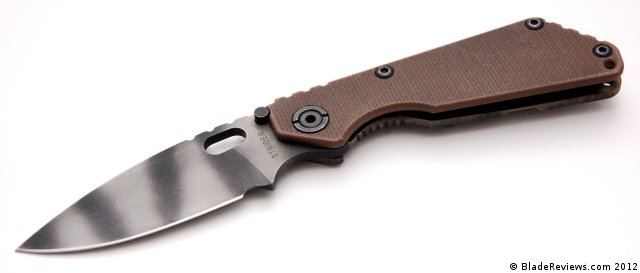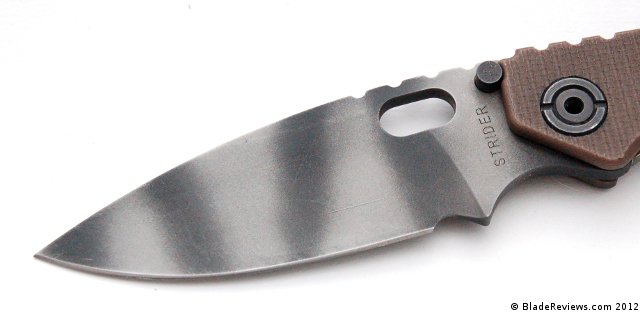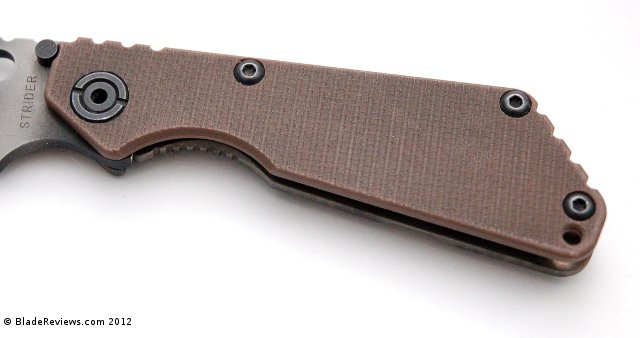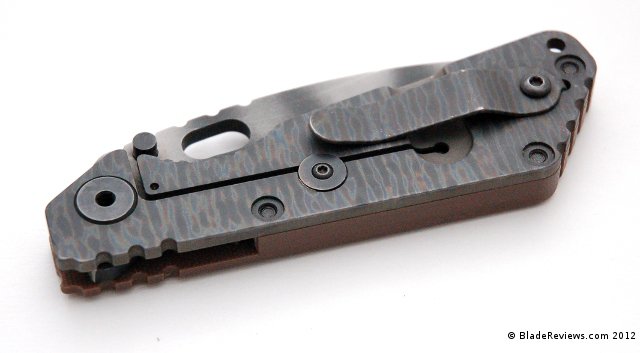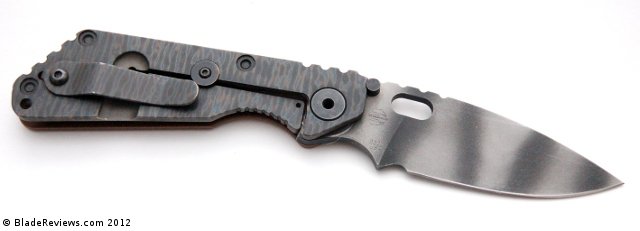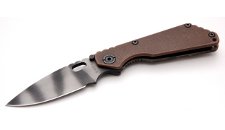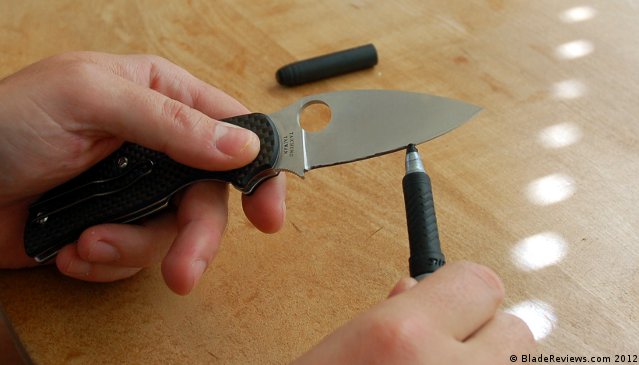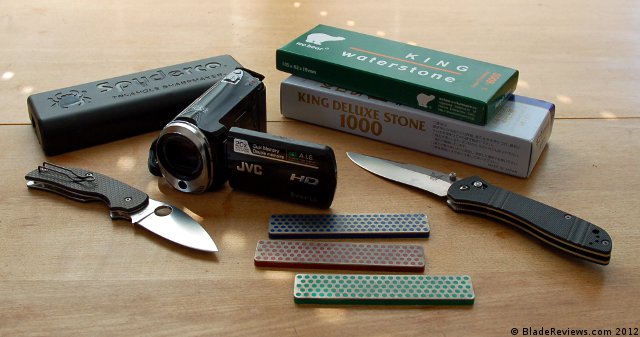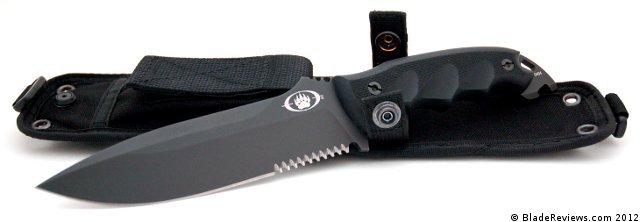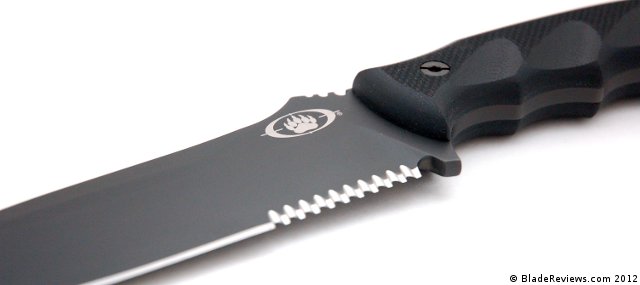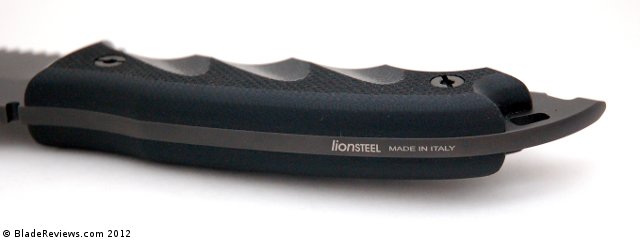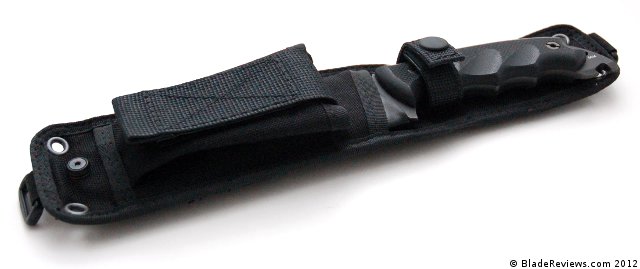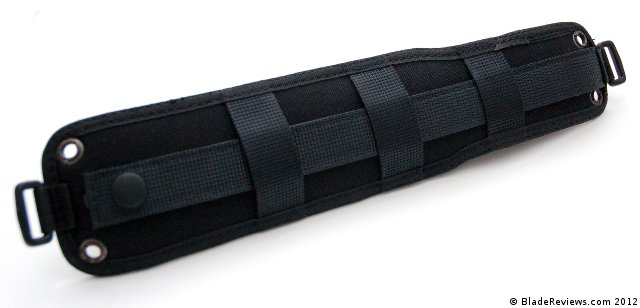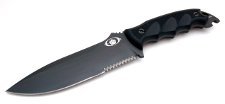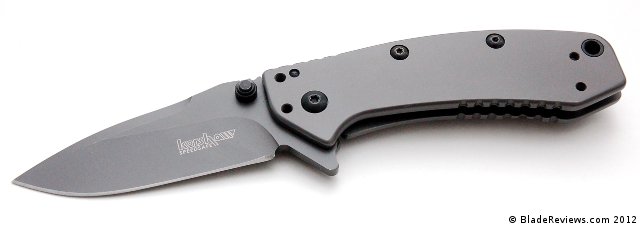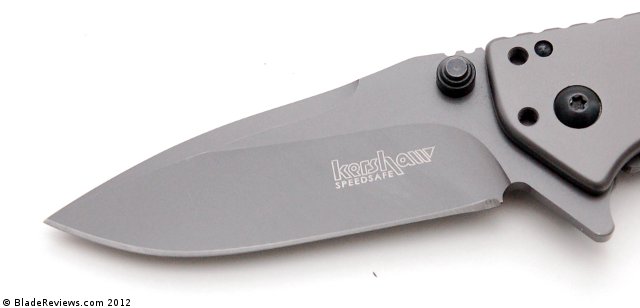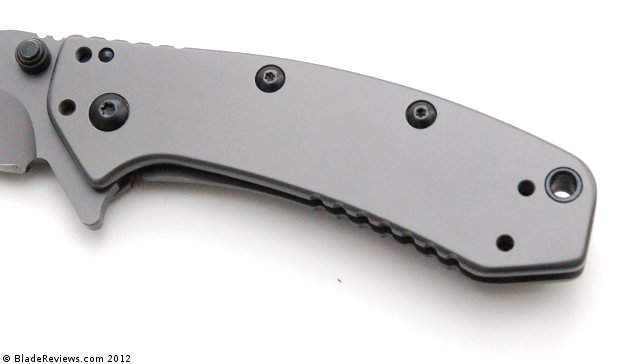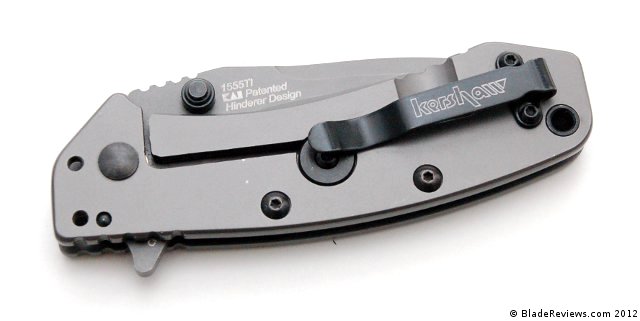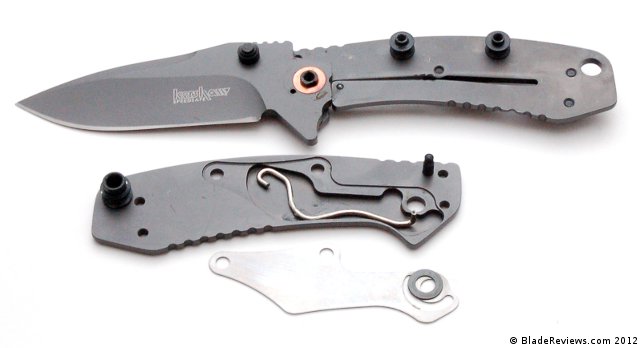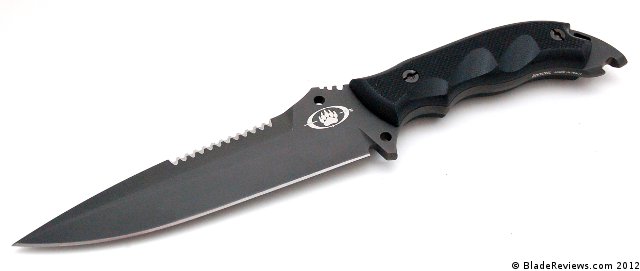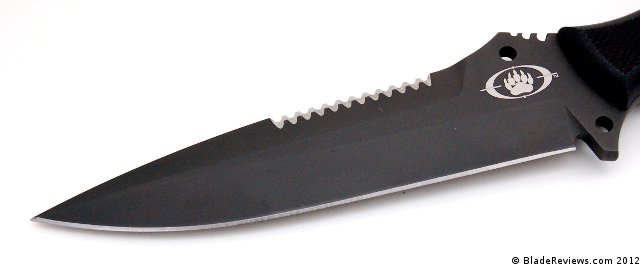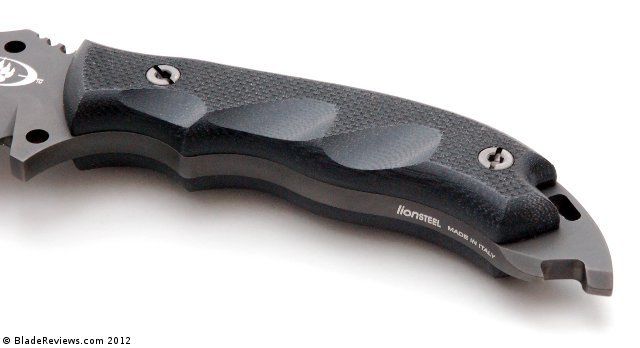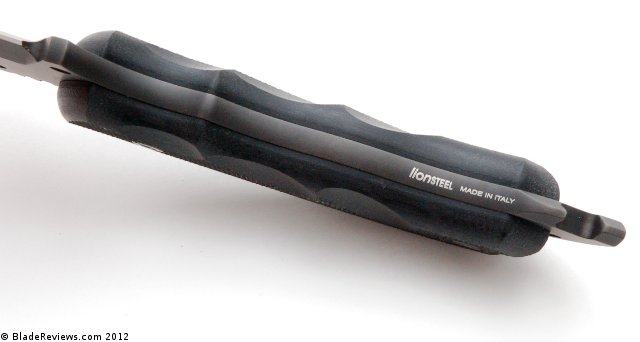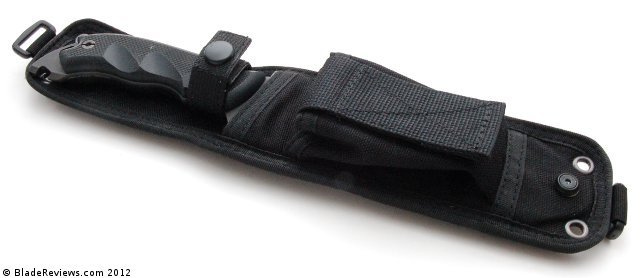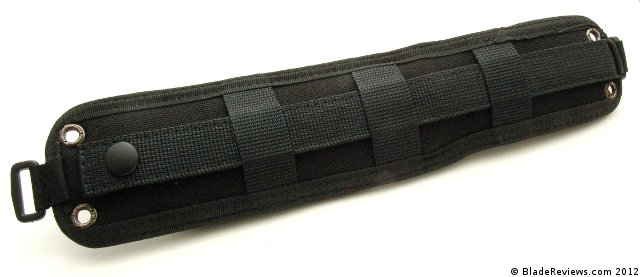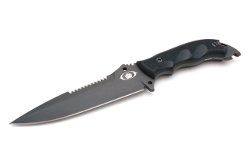Last Updated: September 17, 2019
I’ve mentioned in previous reviews that I sometimes find that Kershaw’s product line falls into a bit of a slump. In the $20-50 range you have a number of what I feel are quite frankly, forgettable knives. Typically it involves some sort of black handle, and bead blasted blade. Many come assisted and are made overseas. To be fair there are designs that stand out in the crowd, and you occasionally get a Skyline or even a Cryo (far from perfect, but definitely a little different). Unfortunately, for every Skyline there are at least half a dozen others that really don’t do anything for me.
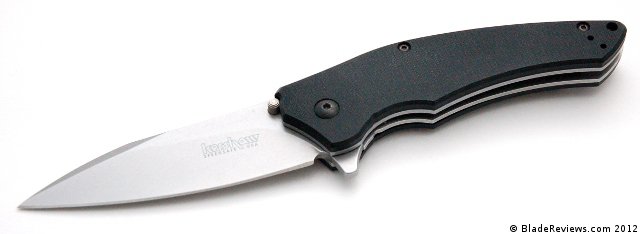
Buy the Kershaw Turbulence at BladeHQ
But occasionally a knife will fly under the radar, unfairly profiled as another unexciting knife. I certainly feel that way about the design I am reviewing today, the Kershaw Turbulence. The Turbulence is designed by maker and in-house designer for Kershaw, Tim Gaylean. Tim was a prodigy of sorts. His website is kind of frozen in time, but you can see some of the custom pieces he made at the age of 24 (and younger). It isn’t all to my taste, but Tim has made some really interesting stuff, and shows a ton of talent.
These days Tim still does some custom work, but it can be really tough to find. This production model Turbulence is based off of his pro-series version that is just uber cool. Unfortunately, his custom version is (as you would expect) extremely expensive – if you even have the privilege of finding one for sale. I can’t believe I missed out on this very affordable production version of the Turbulence when it was initially released about a year ago, but there isn’t much I can do besides admit a mistake was made and soldier on – in the form of a detailed knife review.
General Dimensions and Blade Details
The Turbulence has an overall length of 7.75 inches, sports a 3.25 inch blade, and weighs 4.4 ounces. This has been a nice EDC knife for me, and has served well on some projects around the house as well. Kershaw frames the Turbulence in a more “tactical” light, but for me it’s primarily an EDC.
The blade shape is probably best described as a modified drop point, but really it almost defies convention. I love how the swedge and slight curve of the blade forms into a very fine yet capable tip. It’s a wicked and non-traditional shape that really works from both an aesthetic and practical perspective. The flat ground blade is a decent slicer, and the tip stays plenty strong. There is enough edge to get a lot of work done, and I like how Kershaw decided to finish the knife with a subtle stonewash rather than their go too bead blast. The stonewashed finish will resist rust much better than a bead blast will.
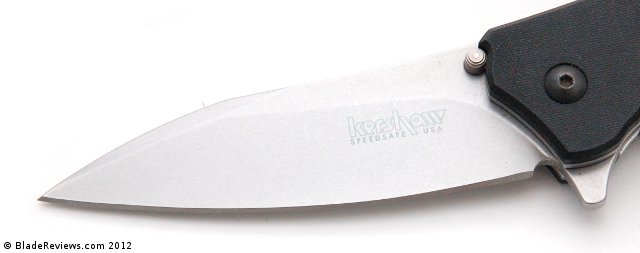
The Turbulence’s blade comes in Sandvic 14C28N stainless steel. This is a Swedish steel that Kershaw commonly uses in their USA-made high value folders like the Skyline. 14C28N held up well in my cut tests. It’s a hearty steel capable of getting a lot of work done, is tough, and is fairly corrosion resistant. It won’t hold an edge forever, but I love how quickly and easily it sharpens. I’d compare it with a good AUS 8 or 440C – totally respectable given the price and intended use of this knife.
Handle, Ergonomics, and Pocket Clip
The handle is tried and true black G10 over full stainless liners. For a relatively inexpensive knife Kershaw made this handle right. They selected surprisingly thick slabs of G10, crisply cut and mated to liners that are partially skeletonized to reduce the weight. I like how the Turbulence is a flow through design with just 2 stand offs and the pivot holding the knife together. The resulting handle is relatively thick, but still elegant, comfortable, and sturdy. Overall, fit and finish is good, but I did notice a couple marks leftover where the laser cutter shaped the liners.
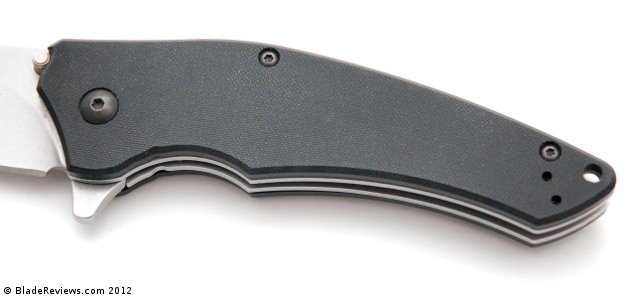
In hand the Turbulence feels extremely comfortable. The relatively thick handle gives you a satisfying grip, and the textured G10 provides both traction and feedback. You have enough handle here to accommodate a large hand, and the thumb rests easily on the spine. There is no jimping anywhere on the knife, and I don’t mind that fact at all. The lack of jimping makes for a very comfortable tool if you ever need to do extended cutting, and I never once ran into a situation where I was slipping off the knife. If you are considering the Turbulence as a tactical knife, it does work alright in a reverse grip.
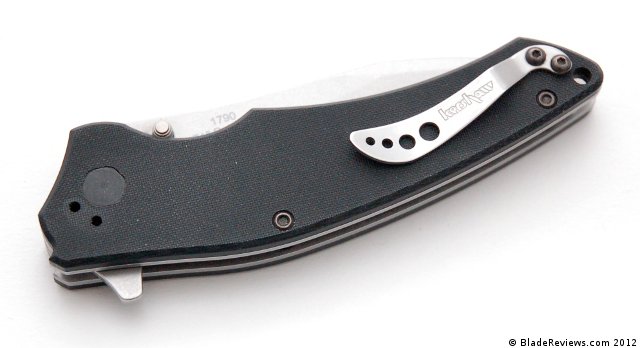
The pocket clip is goofy looking, but it works well and could have been a lot worse. I say ‘it could have been worse,’ because I really don’t care for the clip on the Junk Yard Dog – another one of Tim’s designs. At least the clip on the Turbulence is small and relatively discrete, even if it is kind of funny looking. You do have the option of 3 corner carry, and the knife buries low and stays secure. A blackened clip would have been nice, and I also would have liked something a little less artistic, but functionally speaking this one is fine.
Deployment and Lockup
The Turbulence makes use of a flipper for deployment, and also comes with Kershaw’s SpeedSafe assisted opening mechanism. The action is fast and the knife opens easily. I don’t have any complaints with SpeedSafe per se (actually, it does rattle and make a fair amount of noise in the closed position, so I guess I do), but I’d much rather see this knife unassisted. Tim makes his pro series version with an IKBS bearing system, and I would have loved to have seen this Turbulence come unassisted with KVT (Kershaw’s bearing system found on knives like the ZT 0560). An unassisted flipper with bearings would have been really cool.
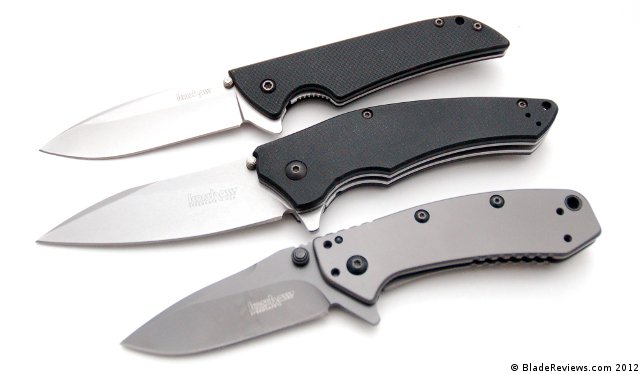
The liner lock on the Turbulence engages early and without play. I’ve got no issues here, the knife is rock solid, yet is still easy to intentionally disengage. It’s worth noting that the “thumb studs” actually are blade stops and work as stops in both the open and closed position. They do not work as thumb studs at all (fine by me).
Kershaw Turbulence Review – Final Thoughts
The Turbulence is a really nice knife, and has rapidly become one of my favorite Kershaw designs. The MSRP is something like $120, but they currently can be had for as low as $50. Compared with something like the $32 Chinese-made Cryo, there isn’t even a competition – the Turbulence just blows it out of the water. The materials are great, fit and finish is good (not perfect – blade centering on my knife is off a smidge, and there were a couple little marks on the liners), the design is amazing, and they managed to get it all done right here in the United States. It’s a practical EDC item, but it also is a beautifully balanced and visually pleasing knife.
If I could offer anything in the way of constructive criticism, I’d say remove the assisted opening and throw in some bearings. Also, swapping the pocket clip out for something a little more discrete would be nice.
But even without those modifications the Turbulence is still a great knife. If you are itching for a unique and well made flipper that deploys with a snap, and won’t break the bank, the Turbulence gets my full recommendation.
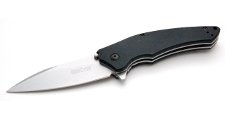
Kershaw Turbulence – 50.74Retail Price: $119.95
You Save: $69.21
From: BladeHQ
I recommend purchasing the Turbulence at BladeHQ. Purchasing anything at BladeHQ through these links helps support the website, and keep this review train running. As always, any and all support is greatly appreciated!
